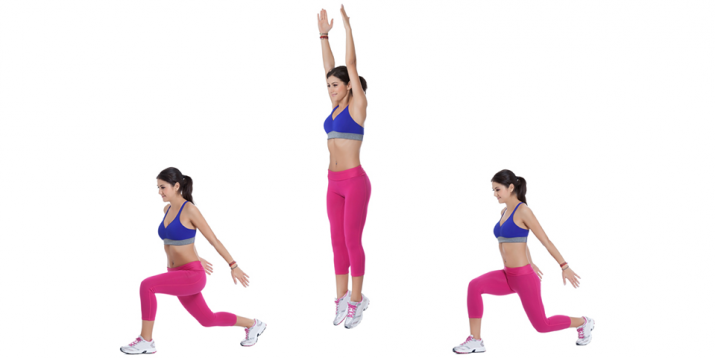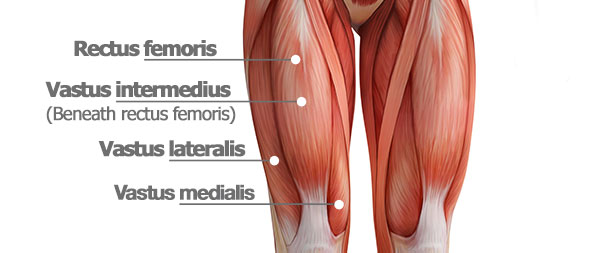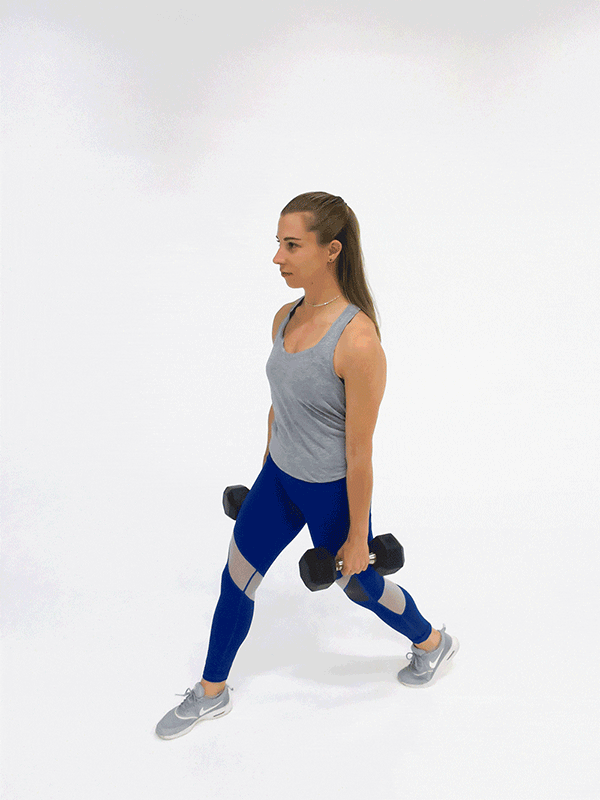How to Do a Jumping Lunge for Leg and Booty Gains

Whether done by stepping forward or backward, the bodyweight lunge is popular among trainers for good reason: It not only hits your legs and glutes, but also works your core and helps build balance and stability.
But if you want to take this classic lower body move to the next level, consider progressing to jumping lunges. Also called a split jump, the jump lunge gives you all of the strength and muscle-building benefits of a lunge while also helping to boost overall athleticism.
It adds a great plyometric/power-building element to any workout, and definitely makes the classic lunge more exciting.
“Not only can the jump lunge help you build explosive power, but because you switch leg positions in the air, it also trains balance, coordination, and stability,” says Trevor Thieme, C.S.C.S.
And because they’re a high-intensity exercise, split jumps also spike your heart rate, helping to burn serious calories and boost cardiovascular endurance.
Jumping Lunge (Split Jump): Step-by-Step Instructions
- Stand in a staggered stance with your right foot about two to three feet in front of your left foot. Let your arms hang by your sides.
- Keeping your chest up, back straight, and core engaged, lower yourself into a lunge: front thigh parallel to the floor, rear knee bent to about 90 degrees.
- Jump straight up so that both feet leave the floor. Swing your arms up in front of your chest will help optimize your momentum and power.
- Switch leg positions in the air, landing softly with your left foot forward.
- Immediately lower your body back into a lunge to begin your next rep.
- Continue alternating legs with each rep.
What Muscles Do Jumping Lunges Work?

Like a regular lunge, the jump lunge targets your quads, glutes, hamstrings, and calves. And, being a plyometric move, it also requires your core muscles to work overtime to keep your body stable and to optimize your power.
Those muscles include:
- Obliques
- Transverse abdominus
- Rectus abdominus (i.e., your abs)
- Erector spinae
Jumping Lunge Modifications

There are several ways to make the jump lunge more or less challenging.
To make them more challenging, try:
- Going faster between reps.
- Holding a kettlebell with both hands (i.e., by the “horns”) in front of your chest.
- Holding a weight in each hand at arms’ length by your sides.
- Adding a squat.
If you’re new to exercise, overweight, or coming back from an injury and need make the move easier, try:
- Refraining from switching your legs in the air; just perform all of your reps with one leg forward, and then repeat with the other leg forward.
- Performing the move minus the jump (i.e., a “split squat”).
